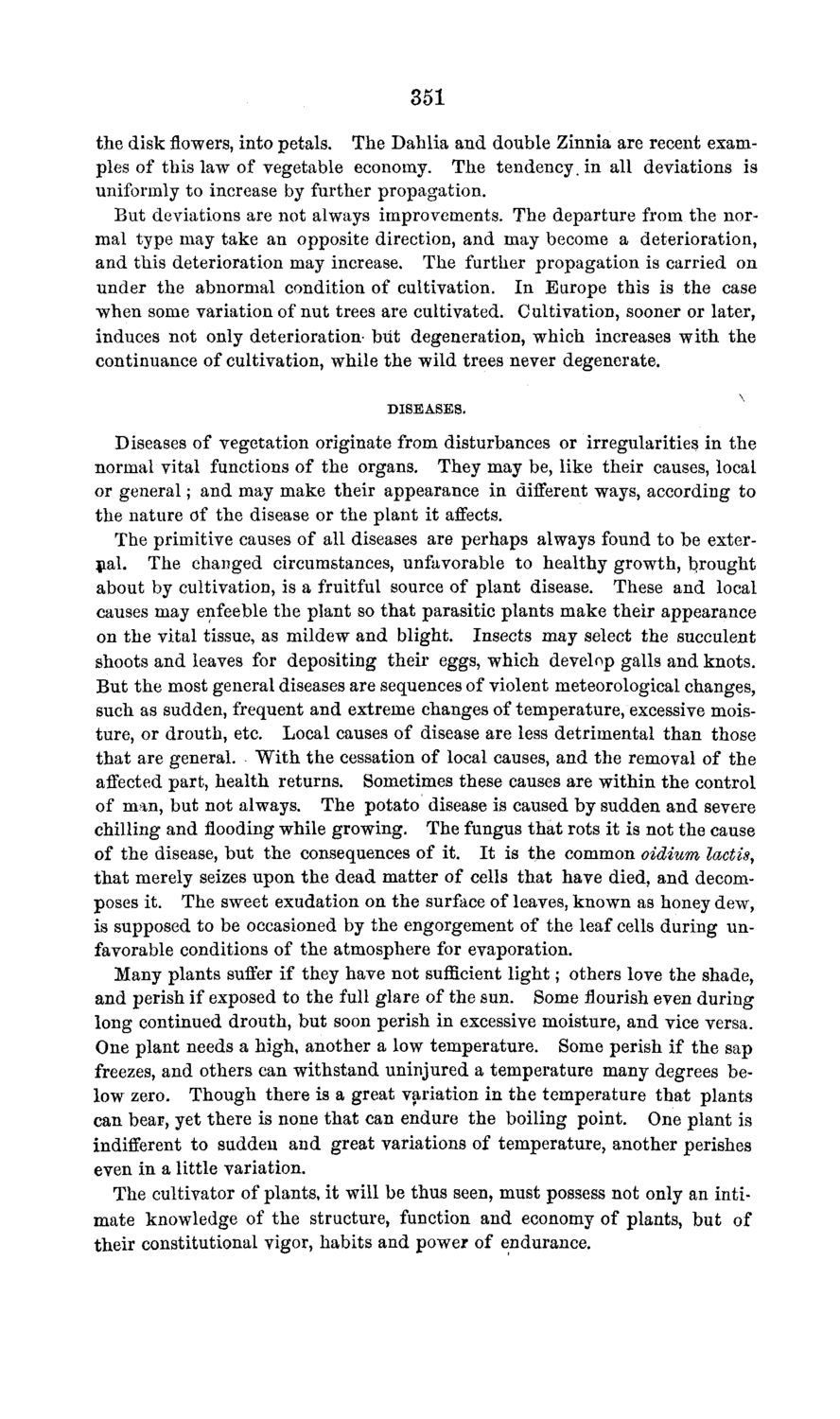| |
| |
Caption: Board of Trustees Minutes - 1869
This is a reduced-resolution page image for fast online browsing.

EXTRACTED TEXT FROM PAGE:
351 the disk flowers, into petals. The Dahlia and double Zinnia are recent examples of this law of vegetable economy. The tendency, in all deviations is uniformly to increase by further propagation. But deviations are not always improvements. The departure from the normal type may take an opposite direction, and may become a deterioration, and this deterioration may increase. The further propagation is carried on under the abnormal condition of cultivation. In Europe this is the case when some variation of nut trees are cultivated. Cultivation, sooner or later, induces not only deterioration- but degeneration, which increases with the continuance of cultivation, while the wild trees never degenerate. DISEASES. Diseases of vegetation originate from disturbances or irregularities in the normal vital functions of the organs. They may be, like their causes, local or general; and may make their appearance in different ways, according to the nature of the disease or the plant it affects. The primitive causes of all diseases are perhaps always found to be external. The changed circumstances, unfavorable to healthy growth, brought about by cultivation, is a fruitful source of plant disease. These and local causes may enfeeble the plant so that parasitic plants make their appearance on the vital tissue, as mildew and blight. Insects may select the succulent shoots and leaves for depositing their eggs, which develop galls and knots. But the most general diseases are sequences of violent meteorological changes, such as sudden, frequent and extreme changes of temperature, excessive moisture, or drouth, etc. Local causes of disease are less detrimental than those that are general. With the cessation of local causes, and the removal of the affected part, health returns. Sometimes these causes are within the control of man, but not always. The potato disease is caused by sudden and severe chilling and flooding while growing. The fungus that rots it is not the cause of the disease, but the consequences of it. It is the common oidium lactis, that merely seizes upon the dead matter of cells that have died, and decomposes it. The sweet exudation on the surface of leaves, known as honey dew, is supposed to be occasioned by the engorgement of the leaf cells during unfavorable conditions of the atmosphere for evaporation. Many plants suffer if they have not sufficient light; others love the shade, and perish if exposed to the full glare of the sun. Some flourish even during long continued drouth, but soon perish in excessive moisture, and vice versa. One plant needs a high, another a low temperature. Some perish if the sap freezes, and others can withstand uninjured a temperature many degrees below zero. Though there is a great variation in the temperature that plants can bear, yet there is none that can endure the boiling point. One plant is indifferent to sudden and great variations of temperature, another perishes even in a little variation. The cultivator of plants, it will be thus seen, must possess not only an intimate knowledge of the structure, function and economy of plants, but of their constitutional vigor, habits and power of endurance.
| |